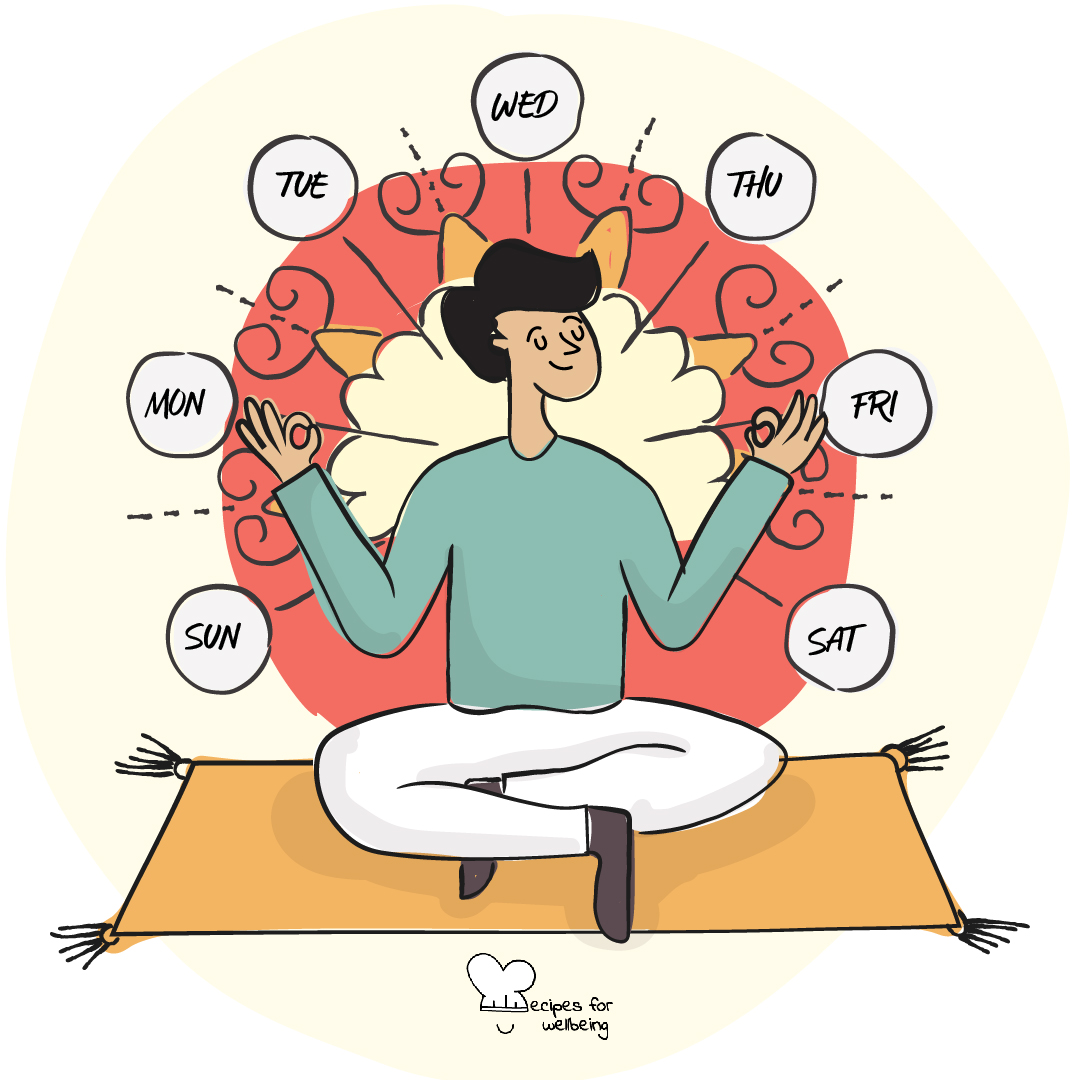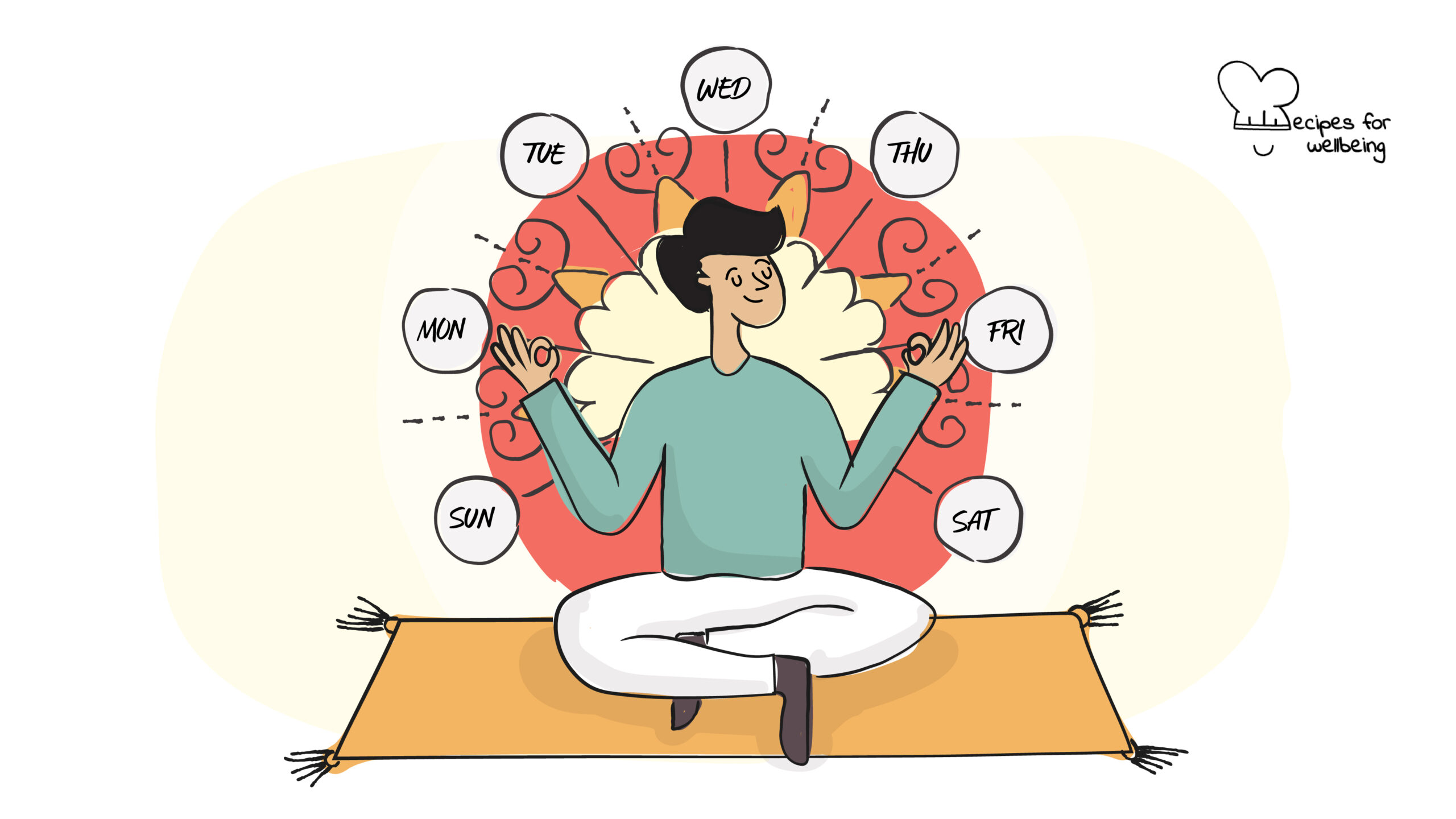
7 practices for peace
There is no way to peace, peace is the way. ―Mahatma Gandhi
👥 Serves: 1 person
🎚 Difficulty: Medium
⏳ Total time: 1 week
🥣 Ingredients: “Peace is the way” book by Deepak Chopra (if you’re curious to find out more about it!)
🤓 Wholebeing Domains: Community, Liberatory Learning, Positive Emotion, Radical Care
💪 Wholebeing Skills: Allyship, Caring, Compassion, Conflict transformation, Empathy, Hope, Intentionality, Liberation, Peacefulness, Serenity

7 practices for peace
📝 Description
A seven-day programme to transform you into a peacemaker.
The following activity has been taken from Deepak Chopra’s book Peace is the way: Bringing war and violence to an end. The book dives deep into how we can expand our awareness to move beyond fear to embrace love, peace, and compassion, and change the world — one person at a time.
This exercise is a seven-day programme to help you become a peacemaker, guiding you through a series of daily practices to bring peace into your life, one step at a time. As Dr Chopra says, “Violence may be innate in human nature, but so is its opposite: love. The next stage of humanity, the leap we are poised to take, will be guided by the force of that love.”
Here is a summary of the weekly programme:
- Sunday: Being for Peace
- Monday: Thinking for Peace
- Tuesday: Feeling for Peace
- Wednesday: Speaking for Peace
- Thursday: Acting for Peace
- Friday: Creating for Peace
- Saturday: Sharing for Peace
👣 Steps
Step 1 – Sunday: Being for Peace
Today, take five minutes to meditate for peace. Sit quietly with your eyes closed. Put your attention on your heart and inwardly repeat these four words: peace, harmony, laughter, love. Allow these words to radiate from your heart’s stillness out into your body.
Step 2 – Monday: Thinking for Peace
Today, introduce the intention of peace in your thoughts. Take a few moments of silence, then repeat this ancient prayer:
“Let me be loved, let me be happy, let me be peaceful.
Let my friends be happy, loved, and peaceful.
Let my perceived enemies be happy, loved, and peaceful.
Let all beings be happy, loved, and peaceful.
Let the whole world experience these things.”
Step 3 – Tuesday: Feeling for Peace
Today is about experiencing the emotions of peace: compassion, understanding, and love. Compassion is the feeling of shared suffering. When you feel someone else’s suffering, understanding is born. Understanding is the knowledge that suffering is shared by everyone. When you understand that you aren’t alone in your suffering, there is the birth of love. When there is love there is the opportunity for peace.
As you practise, observe a stranger some time during your day. Silently say to yourself, “This person is just like me. Like me, this person has experienced joy and sorrow, despair and hope, fear and love. Like me, this person has people in his or her life who deeply care and love him or her. Like me, this person’s life is impermanent and will one day end. This person’s peace is as important as my peace. I want peace, harmony, laughter, and love in his or her life and the life of all beings.”
Step 4 – Wednesday: Speaking for Peace
Today, the purpose of speaking is to create happiness in the listener. Have this intention: “Today every word I utter will be chosen consciously. I will refrain from complaints, condemnation, and criticism.”
Your practice is to do at least one of the following:
- Tell someone how much you appreciate them.
- Express genuine gratitude to those who have helped and loved you.
- Offer healing or nurturing words to someone who needs them.
- Show respect to someone whose respect you value.
Step 5 – Thursday: Acting for Peace
Today, help someone in need: a child, a sick person, an older or frail person. Help can take many forms. Tell yourself, “Today I will bring a smile to a stranger’s face. If someone acts in a hurtful way to me or someone else, I will respond with a gesture of loving kindness. I will send an anonymous gift to someone, however small. I will offer help without asking for gratitude or recognition.”
Step 6 – Friday: Creating for Peace
Today, come up with at least one creative idea to resolve a conflict, either in your personal life or your family circle or among friends. If you can, try and create an idea that applies to your community, the nation, or the whole world. You may change an old habit that isn’t working, look at someone in a new way, offer words you never offered before, or think of an activity that brings people together in good feeling and laughter.
Second, invite a family member or friend to come up with one creative idea of this kind on their own. Creativity feels best when you are the one thinking up the new idea or approach. Make it known that you accept and enjoy creativity. Be loose and easy. Let the ideas flow and try out anything that has appeal. The purpose here is to bond, because only when you bond with others can there be mutual trust. When you trust, there is no need for hidden hostility and suspicion – the two great enemies of peace.
Step 7 – Sharing for Peace
Share your practice of peacemaking with two people. Give them this text and invite them to begin the daily practice. As more of us participate in this sharing, our practice will expand into a critical mass.
Today, joyfully celebrate your own peace consciousness with at least another peace-conscious person. Connect either through email or by phone. Share your experience of growing peace. Share your gratitude that someone else is as serious about peace as you are. Share your ideas for helping the world move closer to critical mass. Do whatever you can, in small or large ways, to assist anyone who wants to become a peacemaker.

